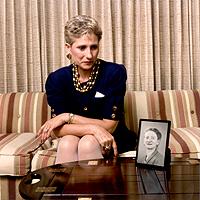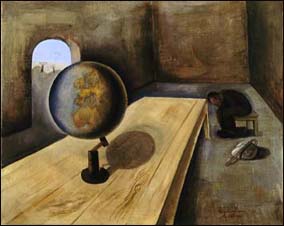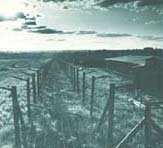
Starting in March 1942, a time of mass murder swept across the continent of Europe. In the next 11 months 4,5000,00 people were killed. By the time WW2 ended the numbers had risen to approximately 6,000,000 Jews alone. That number includes 1,500,00 Jewish children who died at the hand of murderous Nazis. Now many Jews want to speak about how they survived that tragic time. Here are some of their stories.
Mrs. Burk was born in Brussels, Belgium was supposed to be neutral. But rumors in Brussels began to circulate that thing were going to get bad for Jews. She thinks that there was an underground network for Jews to find hiding because her father found places for each of her brothers and sister. At her hiding place she was never mistreated but never loved. The old lady she lived with did not hug her or anything. Also she could never play outside because of the Nazi parades. She would always have to go out to the outhouse when they had parades because the old lady (as did all her neighbors) left her door open for them. Because of this she missed out on much of her childhood.

Dye was 8 when she and her family fled from Yugoslavia and found safety with other European Jews at Safe Haven refugee camp in Oswego. Dye and the other refugees lived at that camp until January 1946. Some went to Oswego schools and some worked at the Hospital and other businesses. Dye's family settled in Oswego after WW2 and opened a studio where yearbook portraits and photographs were taken. She graduated from Oswego High School. She and her family escaped Zagreb, Yugoslavia one day before it was invaded by Nazis.
Mr. Levitch says that he survived "because my father's obsession with never giving himself up to the Germans." He and his family wore peasant style clothing and crucifixes. They even answered to Christian names to avoid suspicion. They eventually fled and boarded a ship to the US.
Daisy was a little girl during WW2. The Miller family had tried to escape several times with no luck. In 1941 they escape several times with no luck. In 1943 with the war nearing its end Daisy was spending time downstairs listening to people that were talking in the house when a neighbor knocks on the door. When he entered he saw Daisy sitting down drinking sugar water. She immediately sprinted upstairs. If they hadn't of told the neighbor she was a visiting friend they could all been killed.
Rudy was shipped around from one camp to another. He described the train cars they took in. He says that they were cattle cars. They put 80 to 100 people in a car. This made the spaces very cramped. The windows were open rectangles. They were so big you could jump out of them but there were SS troops on the roof shooting to discourage people from even sticking their heads out.
Painter, Felix Nussbaum, was arrested and sent to camp of Saint Cyprien and Gurs. He escaped the camps several times and lived in hiding in Brussels until he was caught in 1944 and sent to Auschwitz where he perished.

Rachel was a hidden child like Daisy. She says-"One day the Gestapo came in and the Carmelite-they were Carmelite, nuns, and as you know the men cannot go there. It's one of their rules: they cannot see men. They knocked on the door and [said] we want that Jewish child. We know you have a Jewish child there. And the nuns said absolutely not. We don't have anybody. And they broke the door."
It was bad for Jews. But it wasn't just Jews. There were others "the others". There were 5,000,000 of them. Killed and forgotten. Here is one of their stories.

Baruch is a polish survivor. Here he describes forced labor in Mlawa.
" I will never forget the first time I was beaten up and that really got to me, not so much the pain from the beating, but the mental anguish. Instead of telling me how to put bricks together [they] had to be placed a certain way in order for them to be stacked up, he simply went over and beat me for it, without [my] knowing why. I couldn't even cry. When I came home, I was conscious. I had to go to work. I knew one thing. I had to do the best I can [it was] forced labor, But why? I mean what right? What? It was incomprehensible to me."
5,000,000, some people were shot in the head by Nazi soldiers because of hiding people. Polish citizen suffered greatly during the Holocaust. 11million lives were lost in the Holocaust. 6 million were polish citizens. 1/2 of these citizens were non-Jews.
On August 22,1939, Hitler authorized the commanders of him with "without pity or mercy, all men, women, and children of Polish descent or language. Only in this way can we obtain the living space we need.
"All Poles will disappear from the world," said Heinrich Himmler at Hitler's decree, "It is essential that the great German people should consider it as its major task to destroy all Poles." Poland lost 45% of its doctors, 40% of its professors, 57% of her attorneys, more than 185 of the clergy, and almost all of the journalist. If a Polish child possessed Aryan looking characteristics he/she were taken from their mothers and put in German homes to be raised as a German.
Because of the killing of the Polish Press most of the people around the world was not aware of the happenings. This included many parts of Nazi-occupied Poland. It was a goal of Hitler to rewrite history. He had Nazis destroy monuments, books, and historical inscriptions. 11 million humans were lost during the Holocaust. 3 million were Polish Catholics and Christians.
You may be wandering what in the world is She'erit Hapletah. Well it is Hebrew meaning "surviving remnant." That is the one that play the real survivor game and won the million bucks called life.
The war ended in 1945. Liberators came to the camps and freed the captured. When they came it was said that the worst sight was not the 'piles of dead' but the condition of the ones still alive. The bodies of the survivors were emaciated due to starvation and disease so badly they had lost 50 to 60 percent of their body weight.
The Camp Survivors
Among their survivors was Elie Wiesel. He became a major spokesman on the Holocaust and received the Nobel Peace Prize.
60,000 people were still alive at liberation but 14,000 died of typhus, starvation and other diseases in a few days.
33,000 were alive when they were liberated by the Allies on April 1945.
The work was so brutal that 1 1/2 to 2 million people perished. They were liberated by American troops on May 4,1945. Only 5,419 survived.
Theresienstadt was the Nazis "model ghetto." IT was liberated May 8, 1945 by the Soviet Soldiers. !7,320 people were alive.
There were 300,000 survivors of ghettos, concentration camps and death marches.
The liberators' food couldn't be eaten by the liberated because their digestive systems had begun to close down. Some survivors felt guilty of having lived when so many others died. Even after the war there was steal prejudice, anti-Semitism and lack of concern for fellow human beings. Survivors were shunned, rejected, and persecuted.
" If we follow the scripture "an eye for an eye..." we all will eventually be blind." - Helen Waterford
Lacey Deiter
7th grade Rossville Jr. High
Spring 2001